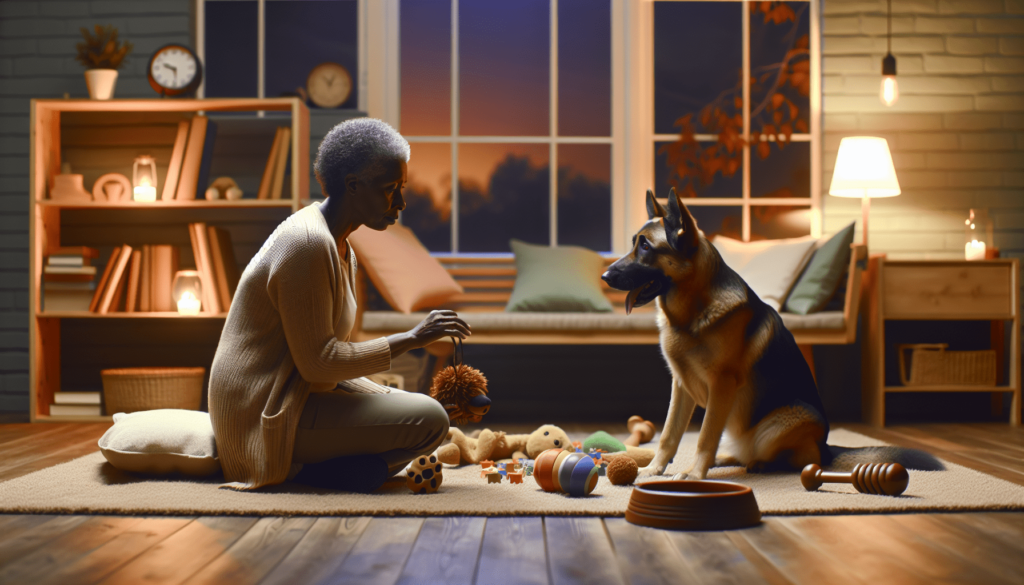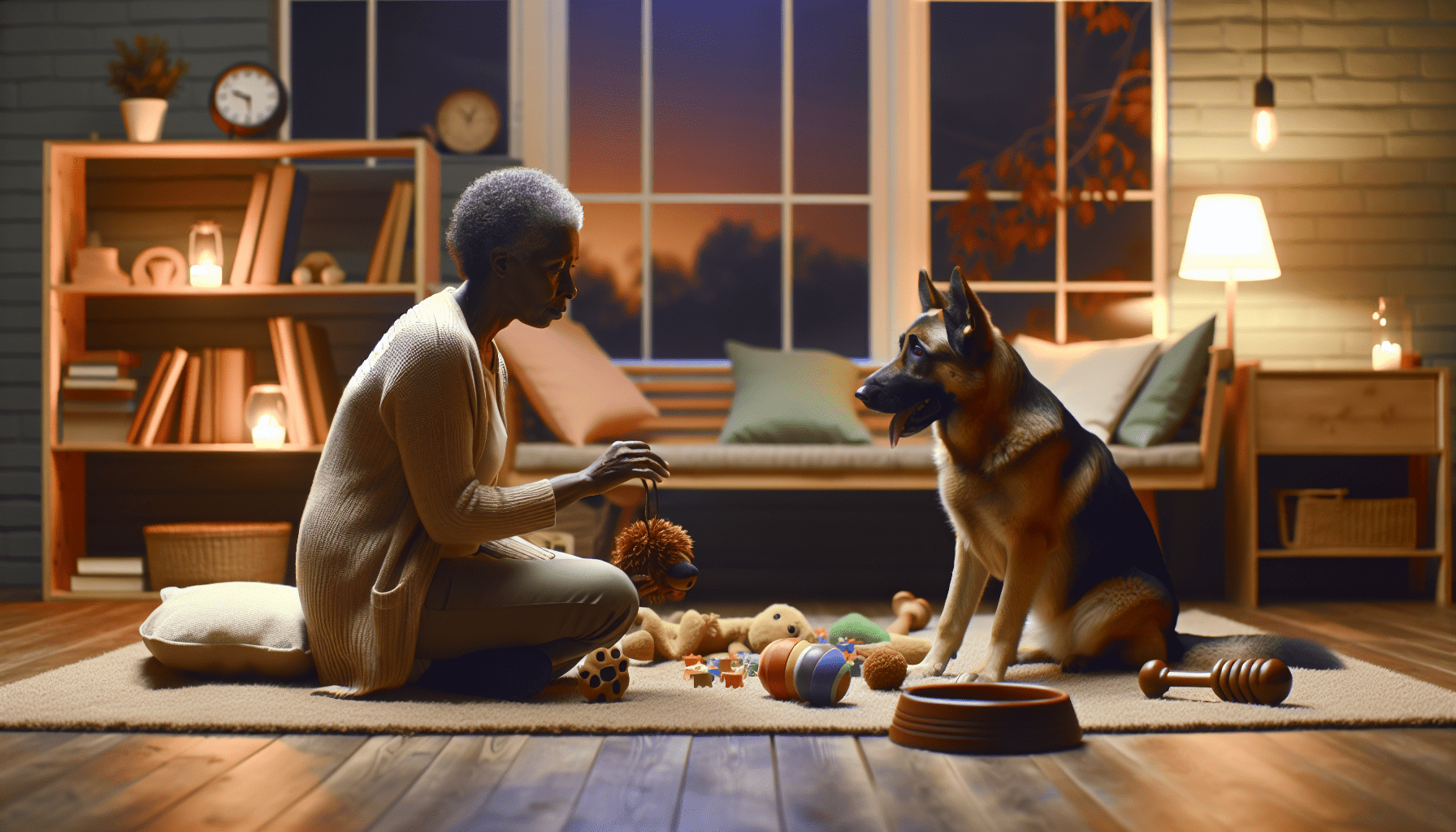So, you’ve found yourself with an aggressive pet and you’re not quite sure what to do. Don’t worry, you’re not alone! Many pet owners have experienced this challenging situation, but the good news is that there is a process for rehabilitating aggressive pets. In this article, we will explore the steps involved in helping your furry friend overcome their aggressive behavior and become a happy, well-adjusted companion. Whether you have a dog, cat, or any other pet, by following these guidelines, you’ll be well on your way to creating a safe and harmonious environment for both you and your four-legged friend.
Understanding Aggressive Behavior in Pets
Aggression in pets is a complex issue that can be caused by various factors. Understanding the different types of aggression is crucial in addressing the underlying problem.
Types of aggression in pets
There are several types of aggression commonly seen in pets. Territorial aggression occurs when an animal feels the need to defend its territory, such as growling or biting when others approach its food bowl or favorite sleeping spot. Fear aggression, on the other hand, arises from a pet’s perception of a threat and manifests as defensive behavior. Other types include dominance aggression, redirected aggression, and protective aggression. Recognizing these types is essential for devising an effective rehabilitation plan.
Common causes of aggression in pets
Aggression in pets can stem from a range of causes. Lack of socialization during the early stages of development can result in fear-based aggression later in life. Additionally, past traumatic experiences or abusive treatment can contribute to aggressive behavior. Medical conditions, such as pain or hormonal imbalances, can also cause pets to become aggressive. Understanding the root causes of aggression is fundamental in addressing it effectively.
Recognizing signs of aggression in pets
Being able to identify signs of aggression is crucial in managing and rehabilitating an aggressive pet. Common signs include growling, lunging, biting, and excessive barking or hissing. Raised fur, flattened ears, and a tense body posture can also indicate an agitated state. Recognizing these signs early on can help prevent potential incidents and allow for prompt intervention.
Seeking Professional Help
While understanding the basics of aggressive behavior in pets is essential, seeking professional help is often necessary to ensure a successful rehabilitation process.
Importance of consulting a veterinarian or animal behaviorist
When dealing with an aggressive pet, consulting a veterinarian or certified animal behaviorist is crucial. These professionals have the knowledge and experience to properly assess the situation, determine the underlying causes of aggression, and provide effective treatment options. They can also rule out any medical issues that may be contributing to the aggressive behavior.
Choosing the right professional for your pet
When selecting a professional to assist with your pet’s aggression, it is important to consider their qualifications and experience in dealing with similar cases. Look for certifications or affiliations with reputable organizations, as well as positive reviews and testimonials from satisfied clients. A good fit between the professional and your pet’s needs is key to a successful rehabilitation journey.
Initial assessment and evaluation
During the initial consultation, the veterinarian or animal behaviorist will conduct a thorough assessment and evaluation of your pet’s behavior and medical history. This includes observing your pet’s interactions, gathering information about any previous incidents of aggression, and conducting any necessary medical tests. This comprehensive evaluation will help guide the development of a personalized rehabilitation plan for your pet.

Developing a Rehabilitation Plan
Once the initial assessment is complete, a rehabilitation plan tailored to your pet’s specific needs and circumstances will be created.
Individualized approach based on pet’s needs
Every pet is unique, and their aggression issues require an individualized approach. The rehabilitation plan will consider factors such as the pet’s age, breed, past experiences, and the specific type of aggression displayed. A customized treatment plan ensures that the underlying causes of aggression are addressed effectively, increasing the chances of successful rehabilitation.
Setting realistic goals and expectations
Rehabilitating an aggressive pet is a process that takes time and patience. Setting realistic goals and expectations is crucial to avoid frustration and disappointment. It is important to understand that complete elimination of aggressive behavior may not always be achievable, but significant improvement and the ability to manage the behavior effectively can be a realistic goal.
Implementing behavior modification techniques
Behavior modification techniques are a vital part of the rehabilitation process. These techniques involve teaching the pet alternative behaviors and replacing aggressive reactions with more appropriate responses. Positive reinforcement, such as rewards and praise, is often used to encourage desired behavior. Patience, consistency, and repetition are key when implementing behavior modification techniques.
Establishing a Safe Environment
Creating a safe and secure environment for an aggressive pet is essential in preventing potential triggers and facilitating their rehabilitation.
Identifying potential triggers and eliminating them
Identifying the specific triggers that lead to aggressive behavior is crucial for managing and rehabilitating an aggressive pet. These triggers can be anything from certain people, objects, or situations. Once identified, it is important to eliminate or minimize exposure to these triggers to reduce the likelihood of aggressive reactions.
Creating a secure and comfortable space for the pet
Providing a designated safe space for the pet can help reduce stress and provide a sense of security. This can be a crate, a specific room, or an area with comfortable bedding and familiar objects. Creating a safe space allows the pet to retreat and calm down when they feel overwhelmed, preventing potential aggressive incidents.
Providing constant supervision and control
Constant supervision is necessary when rehabilitating an aggressive pet to ensure the safety of both the pet and those around them. Confining the pet to a controlled area or using a leash can help prevent potential outbursts. Close supervision also allows for immediate redirection and intervention when signs of aggression arise.

Positive Reinforcement Training
Positive reinforcement training methods are highly effective in rehabilitating aggression in pets.
Reward-based training methods
Reward-based training methods focus on reinforcing desired behaviors rather than punishing undesirable ones. By rewarding the pet for displaying calm and non-aggressive behaviors, they learn that these behaviors are more rewarding and beneficial. Treats, praise, and play can serve as rewards in positive reinforcement training.
Teaching alternative behaviors
One of the main objectives of positive reinforcement training is to teach pets alternative behaviors to replace aggression. This can include teaching commands such as sitting, lying down, or redirecting their attention to a toy or treat when they start to display aggressive behavior. Teaching alternative behaviors helps the pet understand what is expected of them in various situations.
Consistency and patience in training
Consistency and patience are vital when implementing positive reinforcement training. The pet needs time to learn and adjust to the new behaviors, and consistent reinforcement ensures that the training remains effective. Patience is key, as progress may take time, and setbacks can occur. Consistent and patient training will help create lasting behavioral change.
Socialization and Exposure
Socialization and exposure to new situations and stimuli are important aspects of rehabilitating an aggressive pet.
Gradual exposure to new situations and stimuli
Gradual exposure to new situations and stimuli allows the pet to build confidence and learn that these new experiences are not threatening. This can include controlled interactions with other animals, exposure to different environments, or meeting new people. Gradual introductions help the pet become accustomed to these experiences without becoming overwhelmed or triggering aggression.
Desensitization techniques
Desensitization techniques involve exposing the pet to potentially triggering stimuli in a controlled and gradual manner. By gradually increasing exposure to the stimulus, the pet learns to tolerate or remain calm in the presence of something that previously triggered aggressive responses. Desensitization helps the pet develop new associations and helps reduce aggressive reactions.
Building confidence and trust
Building confidence and trust in an aggressive pet is crucial for their rehabilitation. By providing positive experiences, reassurance, and rewards during socialization and exposure exercises, the pet learns to trust their environment and the people around them. Confidence-building activities, such as agility training or interactive play, also help boost the pet’s overall confidence and reduce anxiety.
Managing Aggression Triggers
Evaluating and managing aggression triggers is an important part of the rehabilitation process.
Avoidance of known triggers
When possible, it is important to avoid exposing the pet to known triggers that may prompt aggressive behavior. This may involve modifying the pet’s routine or environment to minimize potential triggers. Avoiding these triggers reduces the chances of aggressive incidents and allows the pet to focus on positive experiences and behavior.
Redirecting attention and providing distractions
Redirecting the pet’s attention and providing distractions can be effective in diffusing potentially aggressive situations. This can include redirecting their focus to a toy or engaging in an activity they enjoy. Distractions help shift the pet’s focus away from the trigger and can prevent the escalation of aggressive behavior.
Effective handling techniques
Effective handling techniques are essential in managing an aggressive pet. This includes maintaining control through the use of leashes, head halters, or muzzles when necessary, ensuring the safety of both the pet and those around them. Understanding the pet’s body language and recognizing signs of potential aggression allows for appropriate handling and intervention.
Regular Exercise and Mental Stimulation
Regular exercise and mental stimulation play a significant role in reducing aggression in pets.
Benefits of physical exercise in reducing aggression
Physical exercise helps to channel a pet’s energy in a positive and productive way, reducing the likelihood of aggressive behavior. Regular exercise, such as walks, runs, or play sessions, not only promotes physical health but also contributes to overall mental well-being. It helps release pent-up energy, aids in stress reduction, and promotes relaxation.
Engaging in interactive play and puzzles
Engaging in interactive play sessions and providing mental stimulation is essential for an aggressive pet’s well-being. Interactive toys, puzzle feeders, and scent games can keep the pet mentally engaged, reducing boredom and frustration, which can contribute to aggression. Mental stimulation also helps develop problem-solving skills and builds confidence.
Ensuring a balanced routine
Maintaining a balanced routine that includes both physical exercise and mental stimulation is crucial for an aggressive pet’s rehabilitation. Regular exercise sessions and mental enrichment activities should be incorporated into their daily schedule. This not only helps reduce aggression but also promotes an overall healthier and happier lifestyle.
Consistency and Reinforcement at Home
Consistency and reinforcement of desired behaviors at home are key factors in the rehabilitation process.
Establishing household rules and boundaries
Establishing clear household rules and boundaries is essential for an aggressive pet’s rehabilitation. This includes consistent guidelines on proper behavior, such as not allowing the pet on furniture or setting boundaries for interactions with family members or visitors. Consistency in enforcing these rules helps the pet understand what is expected of them and minimizes confusion or frustration.
Involving all family members in the rehabilitation process
To ensure the success of the rehabilitation process, it is important to involve all family members in the training and behavior modification efforts. Consistency is crucial, and having everyone on board with the established rules and training techniques helps to reinforce the desired behaviors. Clear communication and coordination among family members promote a harmonious environment for both the pet and the entire household.
Continuous reinforcement of desired behaviors
Reinforcing desired behaviors continuously is vital in ensuring lasting changes in an aggressive pet’s behavior. Consistency in rewarding positive behaviors, providing praise, and using positive reinforcement techniques reinforces the message that non-aggressive behavior is desired and beneficial. Continuous reinforcement helps solidify new behaviors and reduces the likelihood of relapse into aggression.
Monitoring Progress and Adjustments
Monitoring the progress of an aggressive pet and making adjustments to the rehabilitation plan as necessary are essential for a successful outcome.
Tracking and evaluating changes in pet’s behavior
Regularly tracking and evaluating changes in the pet’s behavior is important in assessing the effectiveness of the rehabilitation plan. This can be done through behavioral assessments, monitoring journals, or consulting with the veterinarian or animal behaviorist. Recognizing any improvements or setbacks allows for necessary adjustments to be made to ensure ongoing progress.
Modifying the rehabilitation plan as necessary
A rehabilitation plan should be dynamic and adaptable to the pet’s specific needs. If certain strategies or techniques are not producing the desired results, modifications may be necessary. This could involve altering training approaches, adjusting the environment, or seeking additional professional guidance. Flexibility and the willingness to make changes to the rehabilitation plan are key to achieving the best outcomes.
Seeking guidance in challenging situations
In some cases, the rehabilitation of an aggressive pet may present unique challenges that require professional guidance and assistance. Consulting with a veterinarian or animal behaviorist during such challenging situations is invaluable. They can provide expert insight, offer alternative strategies, and ensure that the pet’s needs are being met throughout the rehabilitation process.
In conclusion, rehabilitating an aggressive pet requires a comprehensive and individualized approach. Understanding the different types of aggression, seeking professional help, and implementing behavior modification techniques are crucial steps. Creating a safe environment, utilizing positive reinforcement training, and gradually exposing the pet to new situations aid in their rehabilitation. Regular exercise, consistent reinforcement at home, and monitoring progress help ensure long-term success. With patience, dedication, and the support of professionals, aggressive behavior in pets can be effectively managed, leading to happier, healthier lives for both the pet and their human companions.

